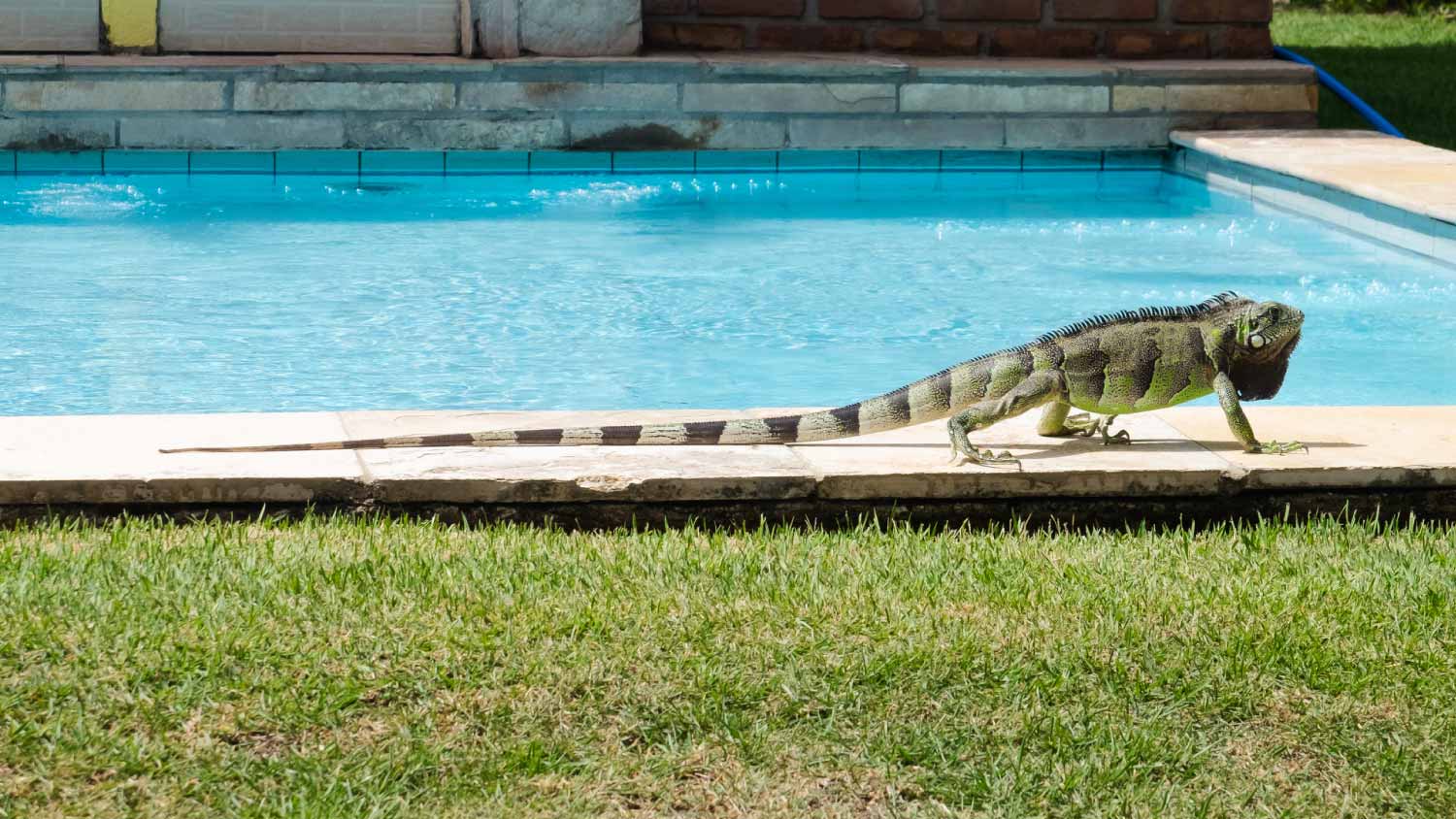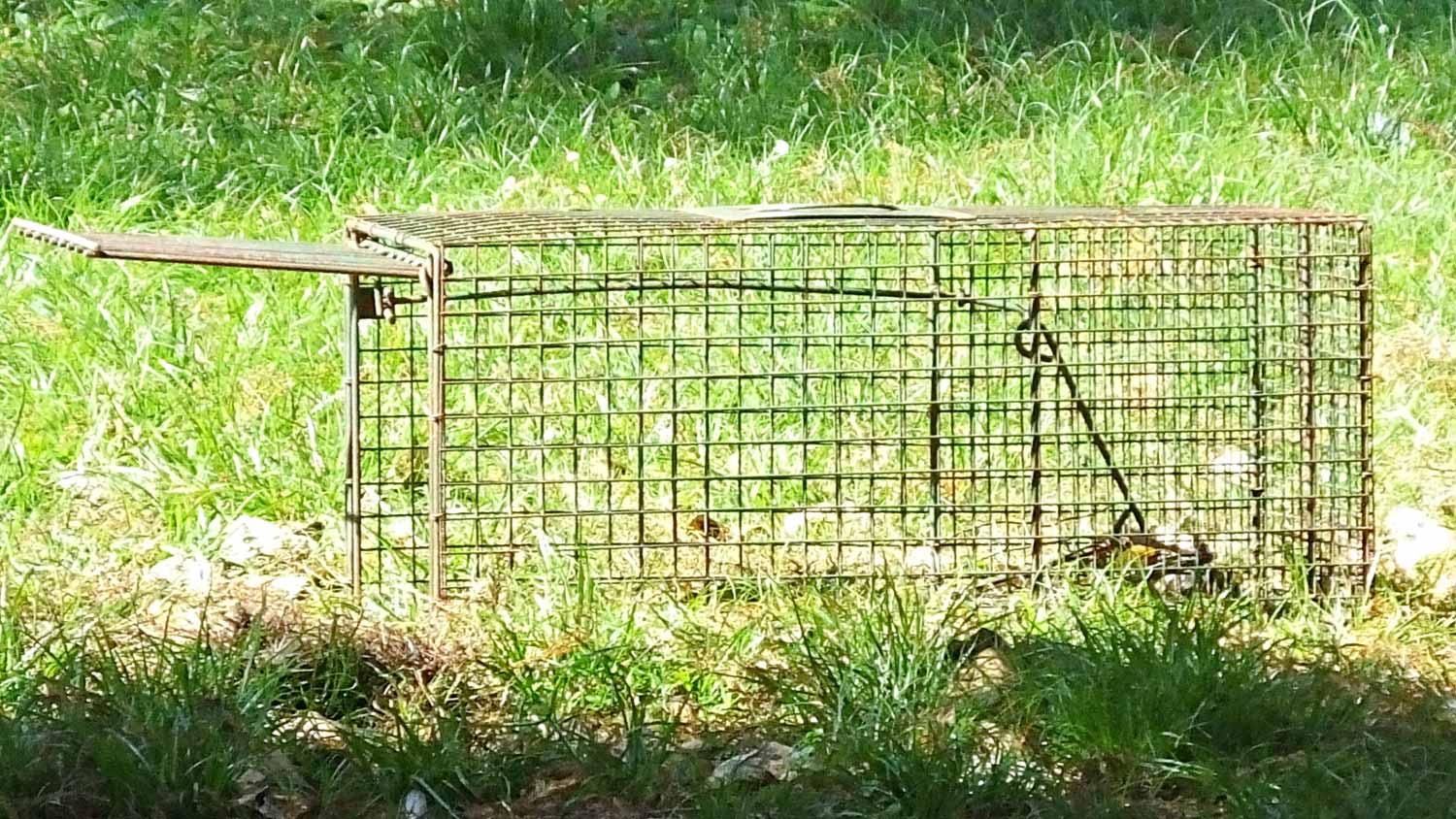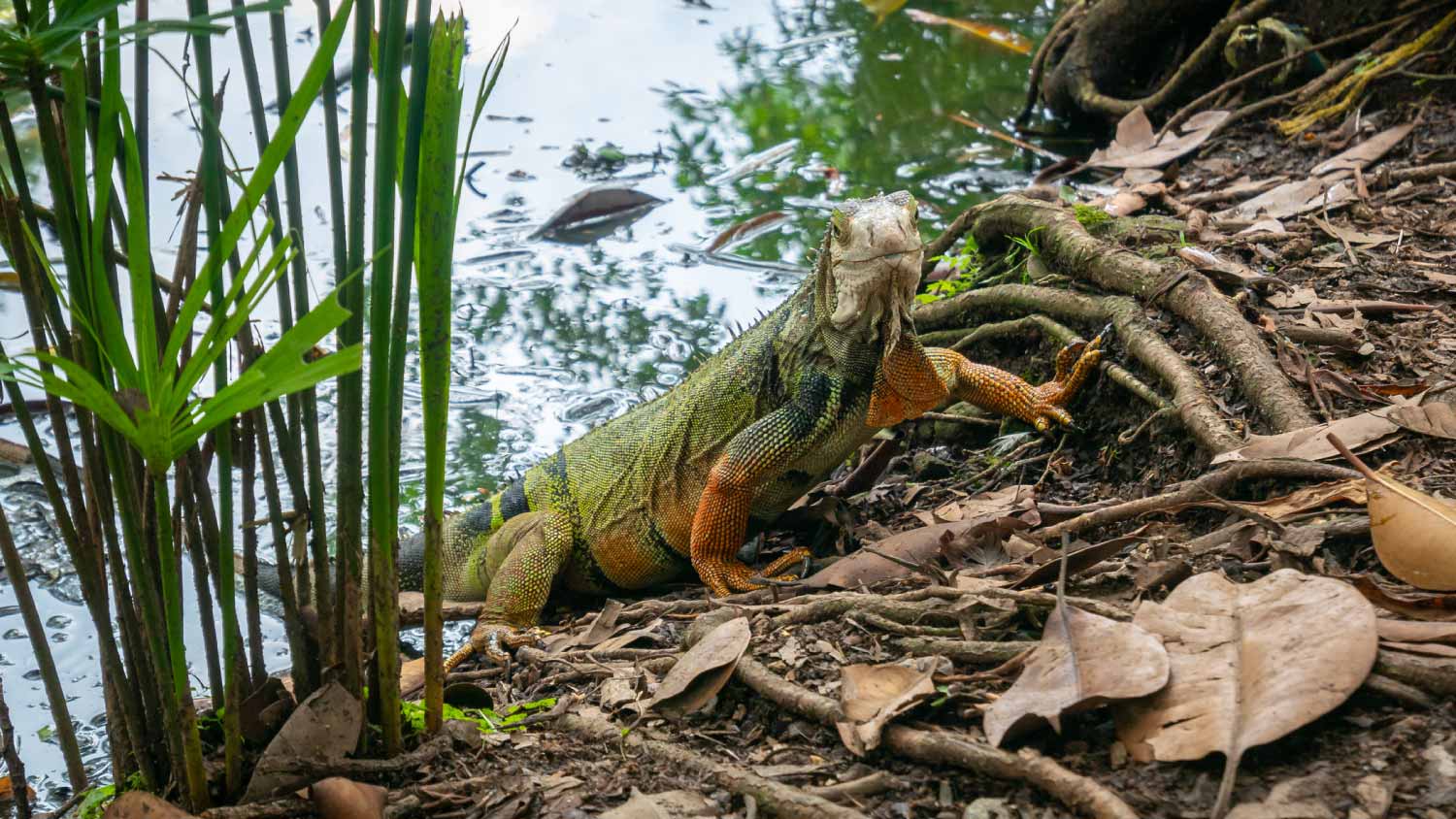
Your skunk removal cost will depend on several factors, including type, location, and more. Our guide will cover everything you need to know about skunk removal costs.
Because your garden shouldn't double as a reptile buffet


Iguanas can wreak havoc on your property, damaging landscaping and undermining your home’s foundation with their burrowing. Additionally, their droppings can create a mess and present health risks. Knowing how to get rid of iguanas humanely and effectively will keep your property safe and looking its best.
Humane trapping is an effective way to handle different types of iguanas, but it's essential to check local laws and regulations first—some areas require permits and have strict guidelines. In such cases, it's advisable to seek the assistance of an animal control expert who can ensure humane and legal capture.
Trapping an iguana requires sturdy metal traps they can't chew through to escape. Ensure the traps lock securely and provide enough ventilation and space to contain the creatures comfortably.
Since iguanas love basking in the sun, set your traps during the day. Remember to close or remove the traps at night to avoid capturing other wildlife.

Start by locating areas on your property where iguanas prefer to hang out, such as near burrows, fences, swimming pools, or gardens. Understanding their favorite haunts will help you strategically place traps in optimal locations.
Using the right bait for iguanas may require some experimentation. Be sure to include a water bowl, which can attract iguanas and keep them hydrated while in the trap.
Iguanas are attracted to sweet, aromatic fruits—they are special treats, but avoid using citrus. These plants and fruits are actual iguana deterrents, so you can consider growing an orange or lemon tree to keep these critters off your property. The best fruits for iguana bait include:
Mangos
Papayas
Bananas
Watermelons
Strawberries
Leafy greens and flowers can work, too, since they are a staple in their diet, but they may be less enticing than fruit. Best greens and flowers include:
Mustard greens
Romaine lettuce
Kale
Collard greens
Dandelions
Geraniums
Roses
Carnations
When placing bait in the trap, position it toward the back so the iguana has to enter fully to reach it. Doing so also helps prevent the trap from being triggered prematurely.

Place the traps where you frequently spot iguanas. Ensure they are stable and won’t tip over. After setting, remember to monitor regularly, ideally every few hours, to ensure that the trapped animal is not exposed to extreme weather conditions.
We recommend calling a pro to handle the iguana once you’ve captured it. Iguanas carry salmonella, so you should not handle them directly. They can also be unruly, and the whip from their tails hurts.
When moving the baited traps, wear proper projection by wearing gloves and covering your arms and legs. For overly anxious iguanas, spray them with cool (not cold) water to slow them down. You can also try covering three sides of the trap to reduce any distractions that cause stress, like quick movements.

Relocating iguanas can help manage their presence on your property, but it's important to note that the green iguana, the most common and problematic species, is invasive. Relocating them can spread their population and cause ecological harm, which is why it’s illegal in some states, including Florida.
In areas that don't allow relocation, humane euthanasia is considered the best option, but pest management professionals rather than homeowners should handle it. Alternatively, reptile and iguana rescues across the South may accept these creatures.
If you have the equipment already, consider handling a mild iguana infestation yourself. However, metal traps can be expensive, with single-capture animal traps starting at $50 and multi-iguana traps costing hundreds. It’s often worth the cost to hire a pro instead.
Also, depending on your location, you may still need to hire a wildlife professional to handle relocation or humane euthanasia. Homeowners who illegally relocate these creatures or, worse, use inhumane tactics to kill iguanas, like drowning and poisoning, may face steep fines or jail time in some municipalities.
Remember, wildlife control professionals have the expertise to handle small and large iguana infestations. They can assess the situation accurately and employ techniques aligned with legal requirements in your area. Additionally, they will provide comprehensive solutions, including long-term prevention strategies, habitat modification, and specialized deterrents. The cost of wildlife removal depends on the severity of the situation and the methods used. On average, homeowners can expect to pay between $190 and $610.
When baiting traps for iguanas, avoid using herbs, fruits, and vegetables that are toxic to them, such as fresh sage, rosemary, avocados, and eggplants. While fresh, ripe fruit is effective at attracting iguanas, be cautious of pits and seeds from fruits like apples, pears, and peaches, as they are highly toxic. Additionally, steer clear of citrus fruits, a natural deterrent to iguanas.
Some suggest mothballs as a deterrent for iguanas, but they are ineffective and harmful. Mothballs contain chemicals like naphthalene or paradichlorobenzene, which are toxic to humans and animals, including iguanas. The fumes can cause respiratory problems, skin irritation, and other health issues. Moreover, using mothballs outdoors is not recommended, as they contaminate soil and water sources.
From average costs to expert advice, get all the answers you need to get your job done.

Your skunk removal cost will depend on several factors, including type, location, and more. Our guide will cover everything you need to know about skunk removal costs.

If iguanas are plaguing your home and destroying your property, proper removal is key. Learn the costs to expect from an iguana removal service.

When calculating wildlife removal costs, you’ll need to consider the type, size, and amount of animals. Our guide will show you the wildlife removal cost.

If you are wondering who to call for raccoon removal, these pros will handle your situation humanely and according to local guidelines.

If you want to trap a fox, you need the perfect bait. Here’s everything you need to know about the best bait for fox traps and their preferred use cases.

If you're stumped about what animal is digging holes in your yard, use this guide to identify the signs of different species and stop them from causing damage.